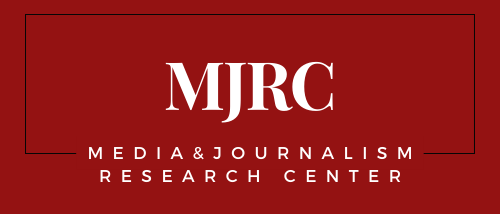Media and Journalism Research Center: Our 2025 Research Agenda
The year 2024 was a rollercoaster ride for the media sector. Journalism globally grappled with a slew of hurdles, as governments tightened their grip on media institutions and tech giants exacerbated the industry’s financial woes. Yet, amidst the clouds, there were also intriguing silver linings. In various regions, local media outlets witnessed an uptick in revenues, cross-border investigative journalism continued to deliver exceptional work, and emerging generations of journalists infused the field with innovative ideas and fresh perspectives.
This presented a rich tapestry of challenges and opportunities for the Media and Journalism Research Center (MJRC) to unpack. We’re pleased to reflect on what we accomplished this past year, owing largely to the dedication of our expanding network of experts.
As we do that, three accomplishments stand out as defining hallmarks of our work in the media research sphere: international collaborations, financial self-reliance, and leading in the promotion of the next generation of media researchers.
To begin with, MJRC continued breaking new ground in building global partnerships, propelling a series of comparative, multi-nation studies that leveraged the expertise of world-class media researchers. In 2024, we contracted a total of 121 experts as part of our research projects.
On the financial front, we managed to uphold our independence thanks to a blend of philanthropic support, academic sponsorship, research partnerships, as well as a new program of self-generated investment-based revenue streams. By steering clear of government funding and not becoming dependent on tech corporations, we are able to produce objective, unbiased research that is not skewed by any of these powerful players.
Lastly, our Young Media Researchers Program continues to be a cornerstone of our mission. Last year, this initiative attracted again a growing cohort of gifted, driven students whose published work has not only reverberated through professional circles but also sparked new research ideas.
While we hope to preserve these strengths, we gaze toward 2025 with a mixture of confidence (buoyed by our ideas and plans), trepidation (triggered by the troubling political and military upheavals wreaking havoc globally), and optimism (that reason and a renewed commitment to facts and journalism will prevail). On that note, let us cast a spotlight on a few key projects we’re planning to work on this year.
To start, we plan to further expand and diversify some of our flagship initiatives, detailed here:
- Media Influence Matrix: Our spotlight will shift to Sub-Saharan Africa this year, a region largely forgotten by media research, where we aim to deliver a few country studies. At the same time, we plan to update some of the existing studies in the 40+ countries where the project was carried out.
- State Media Monitor: As every year, the release of updated media profiles and a 2025 comparative overview for what has become a 170-country (and expanding) research initiative is slated for this October.
- Global Media Finances Map: This project is powering ahead with plans to deliver 20 country-specific analyses and case studies. As part of the project, we are planning to release studies of major philanthropic groups that support media (such as the Open Society Foundations and the Bill & Melinda Gates Foundation) as well as a series of analytical studies mapping media ownership and financial sustainability in countries such as Senegal, Nepal, Colombia, and Armenia, among others.
- Decoding the Power Play: A comparative analysis of political funding is primed to be issued this year following our 2024 data collection efforts spanning a dozen countries.
- Media Capture Monitoring Report: In partnership with the Vienna-based International Press Institute (IPI), we plan to publish updated reports for the seven countries we currently monitor and hope to extend the project to new nations.
- Tech Players Insights: We will continue to map and examine key players in the technology field whose influence on media and journalism demands keen observation, following the publication of a map of 100 AI companies that produce tools for media and journalism.
Moreover, as we embark in 2025 on a fresh strategic journey, we will undergo an extensive stakeholder consultation from March through October. This dialogue with our partners and research users will guide the creation and publication of MJRC’s 2026-2028 strategy, scheduled for release in December. With an eye to the future, we also envision rolling out several new research projects in 2025, the details of which are outlined below.
First, we are planning to roll out Who’s Listening—a research initiative designed to dive deep into the dynamics of diverse audiences and communities. This project will diverge somewhat from our standard media mapping projects in that it will shift the focus on studying the social, political and cultural contexts of the audiences that media and journalists are seeking to capture. The objective is to examine how individuals engage with, consume, produce, and disseminate information as part of their everyday social interactions, and to what extent this engagement originates from journalists and media outlets.To bring this project to life, we intend to collaborate with universities and research hubs within our network.
Recognizing the importance of moving past the narrow focus on disinformation-focused research, we are preparing to introduce Propaganda Narratives. This project will investigate the communication strategies and methods deployed by some of the world’s key geopolitical players with a view to understanding the scale of government spending on influencing efforts, the channels and products they leverage, and their ultimate objectives.
Turning our spotlight to power dynamics, Who Shapes Public Opinion? is another new research effort in the works. Using a methodology combining two key indicators (audience/market power and financial power), this project’s goal is to profile the dominant players shaping public opinion within several European nations.
Rounding out our pipeline, the Director’s Project in 2025 will be a study that introduces a four-part classification of journalism models in Europe—including corporatized, public interest, captured, and atomized models. Drawing insights from a financial review of European media companies, conducted by our Director Marius Dragomir in 2023-2024, this study takes stock of the shifting landscape of journalism on the continent. It investigates critical themes such as editorial independence and sustainability, while spotlighting the main differences in the types of journalism among European nations.
With a packed agenda ahead, we look forward to another year of work and fun alongside our incredible experts and partners.
Photo: Unsplash+ License
Support independent media research – your donation helps keep our work open.
Donate
